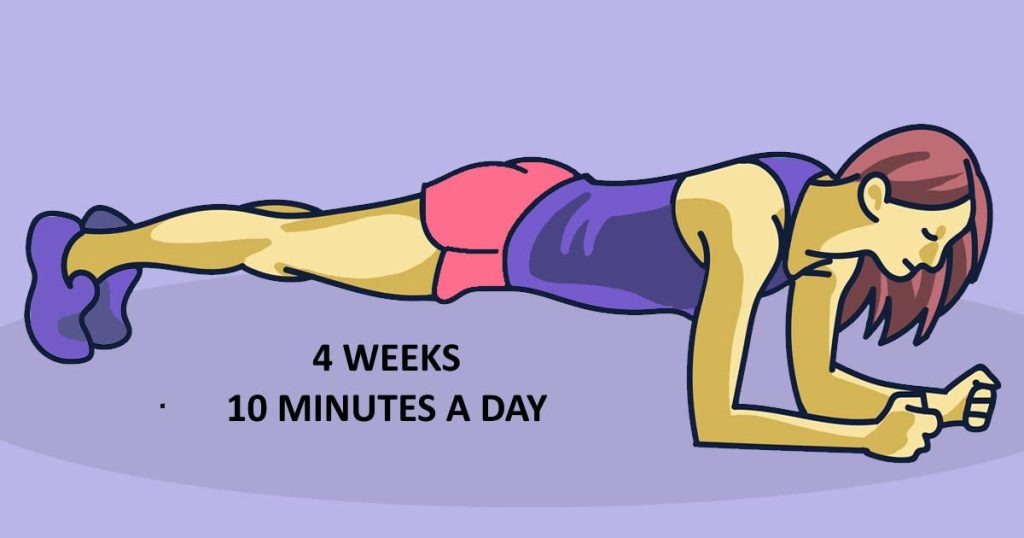We all have that one friend who can allegedly hold a plank for 15 minutes. While none of us have ever stuck around long enough to actually see this astounding, 15-minute plank, it’s pretty safe to assume that the form probably isn’t perfect, especially toward the end of the time cap.
Whether you’re holding a super-long plank or practicing the move for 30 seconds at a time, the exercise becomes pointless if you’re not doing it properly. Brush up on the correct plank form and absolutely avoid these five common mistakes.
How to Do a Forearm Plank
Low Plank
0 seconds of 3 secondsVolume 90%
TYPEStrength
REGIONFull Body
- Lie face down on the floor, with your forearms on the ground, elbows directly beneath the shoulders.
- Extend your legs straight behind you, toes tucked.
- With your core braced, press into your toes and forearms and raise your body up off the ground.
- Keep your back flat and body in a straight line from head to hips to heels.
Show Instructions
1. Arching Your Back
One of the most common plank mistakes is arching the lower back, says April Whitney, CSCS. As your core starts to fatigue, it’s common to let your midsection sag toward the ground, causing your back to fall out of alignment.
Although this error doesn’t always cause immediate injury, this mistake causes stress on the lower back, which, over time, leads to lower back pain or sensitivity, Whitney says.
Letting the lower back arch also takes the core-strengthening benefits out of the exercise. That’s because your abdominals are no longer working to hold your body up, ultimately stalling your progress.
Fix It
Tuck your pelvis under to keep your back straight, Whitney says. Think about drawing the belly button into the spine and tilting the hips up toward your chest to prevent the lower back from drooping.
2. Looking Up
Looking up at a mirror or clock during your plank may help you check your form or stay on track, but it can also wreak havoc on your form, Whitney says. The key to a plank lies in keeping your entire body in a straight line from head to hips to heels.
Glancing at a clock or mirror on the wall will throw your body out of alignment. And holding your head in this position for even a few planks a week can cause soreness in your neck and tightness in the upper back muscles, Whitney says.
Fix It
Keep your neck long and eyes on your hands (in forearm plank) or straight down in front of you (in high plank). This will help prevent the neck from craning and trap muscles from bunching up.
3. Hiking or Sagging the Hips
About 45 seconds into a minute-long plank, you may be tempted to hike the hips to the ceiling or sag them toward the ground to give your abs a break. You may even be doing it without realizing it!
“Hiking the hips up to the ceiling is going to take the emphasis off your core and load it more onto your shoulders, making it a different exercise,” Whitney says. “To get the most out of a plank for your core, you’ll want to keep your hips in a straight line with your body, with the pelvis tucked under.”
ADVERTISEMENT
Fix It
The plank is a full-body exercise — that includes your legs and glutes. To keep your hips from hiking toward the ceiling or sagging toward the ground, contract your quads and squeeze your glutes, Whitney says. This will help level your hips and engage your core.
4. Hunching Your Shoulders
As your plank holds get longer and your body begins to shake (hang in, you’re almost there!), you may notice your breath grow uneven. This is the perfect time for a form check — are you shoulders hunched up around your ears?
If the answer is yes, you’re making another plank mistake. Bunching the shoulders up can make your upper back muscles tight and cause your neck to strain against the tension, Whitney says. Plus, bunched up shoulders makes it more difficult to maintain an even breathing pattern, which is necessary for any exercise.
Fix It
Keep your shoulders down and back while you plank. As your breath becomes more labored, do a quick scan of your body and check that your shoulders are in the right place.
5. Planking Too Long
It’s no surprise plank challenges are a thing on social media. Most of them require you to stay off the ground in a plank for longer and longer increments week after week. But when it comes to proper plank practice, that philosophy totally misses the mark, according to the American Council on Exercise (ACE).
Holding a plank for minutes on end inevitably leads to fatigue and is sure to cause a breakdown of form. And performing any exercise with bad form is pointless. If you can actually hold a plank for several minutes at a time with good form, the exercise is probably too easy for you.
Fix It
Planks are a great fundamental move that can help you develop beginner-level core stability, according to the ACE. But planks keep the muscles in a contracted position and actually burn fewer calories than movement-based exercises. Instead of holding your planks for several minutes at a time, move on to more challenging core exercises.


